Deck & Commander Strategies

Niv-Mizzet Reborn
Leverages a five-color card advantage engine by drawing and replaying creatures with powerful enter-the-battlefield effects, aiming to drown opponents in value and overwhelm them with incremental advantage.
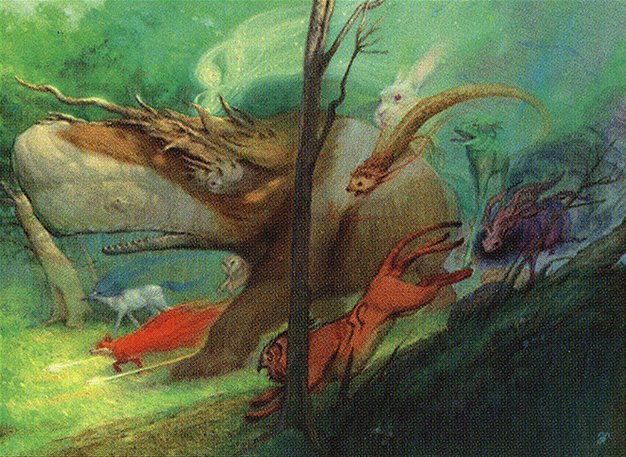
Horde of Notions
Focuses on elemental tribal synergies with extensive enter-the-battlefield triggers and graveyard recursion to generate incremental value and maintain board presence through repeated elemental effects.
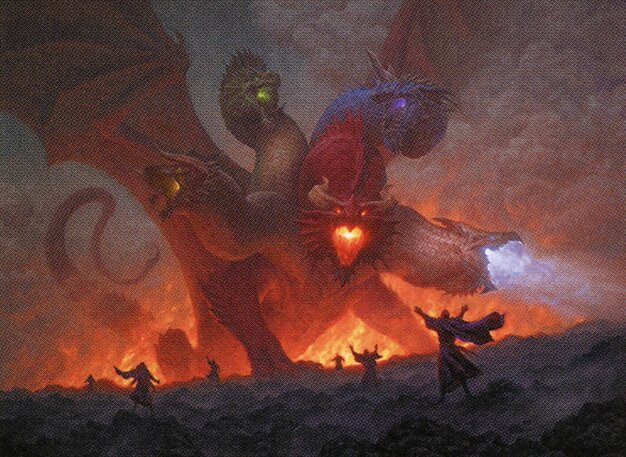
Tiamat
Utilizes a dragon tribal strategy enhanced with food token generation to produce a large board of powerful creatures, aiming to crush opponents with brute force and overwhelming board states.
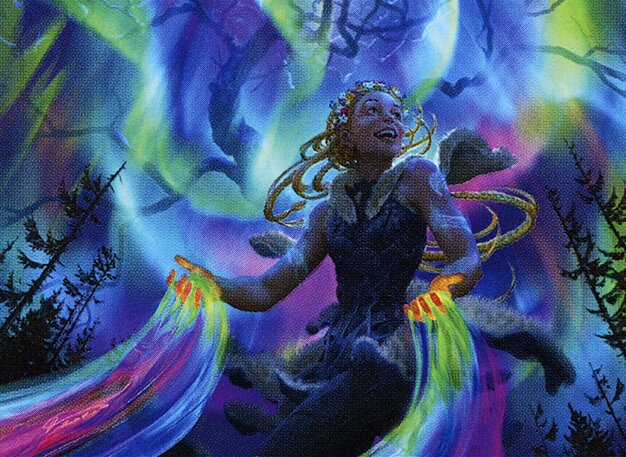
Esika, God of the Tree // The Prismatic Bridge
Centers on casting legendary creatures swiftly through ramp and token strategies, leveraging The Prismatic Bridge’s ability to cheat powerful legendary creatures onto the battlefield to overpower opponents.
Gameplay Insights
- 1
The use of Solitude to flash-remove Niv-Mizzet was a critical disruption, but the immediate response with Turn to Mist prevented permanent loss and delayed the threat's return, illustrating the power of instant-speed interaction.
- 2
Players prioritized fetching and playing Triumph lands to ensure mana fixing for their five-color decks, enabling casting of high-impact spells early in the game.
- 3
Trading smaller creatures like Baleful Strix early helped players manage board state and mitigate commander damage threats, showing cautious engagement rather than reckless aggression.
- 4
Leveraging commanders’ unique abilities to generate tokens and value (e.g., Wavebreaker Adept creating clues and tokens) helped maintain pressure and resource advantage throughout the midgame.
- 5
Crucible of Worlds was kept on the battlefield as a key enabler for land recursion, allowing repeated fetching of Triumphs and shock lands for mana consistency.
Notable Cards
-

Solitude
-
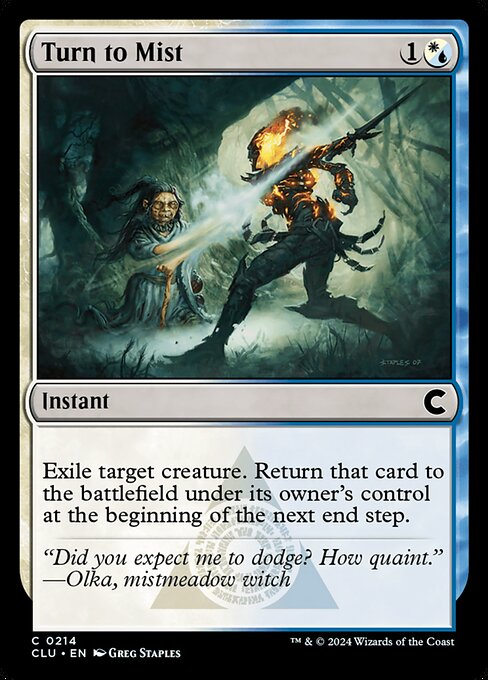
Turn to Mist
-

Skyshroud Claim
-
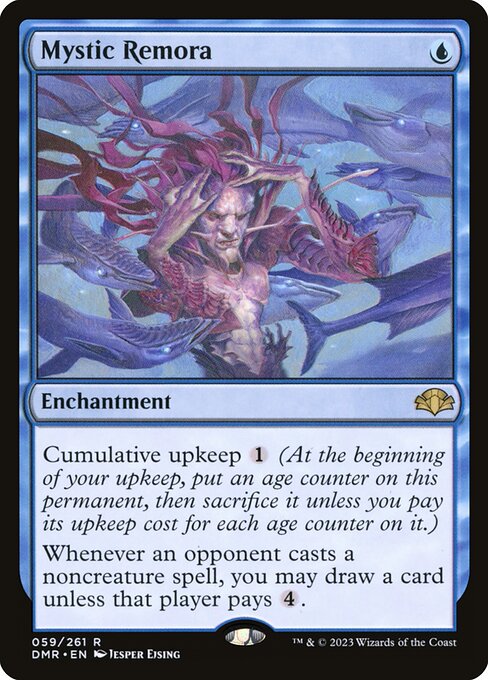
Mystic Remora
-
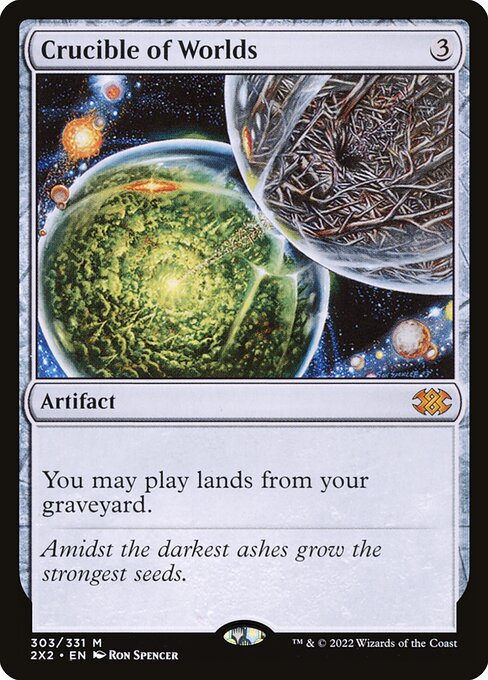
Crucible of Worlds
-
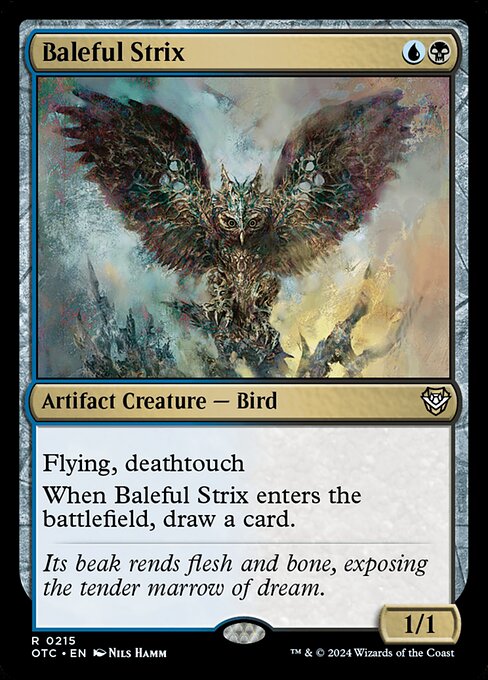
Baleful Strix
Gameplay Summary
The game featured a high-powered four-player Commander match, each piloting a five-color deck with distinct strategies.
Early turns were focused on ramping mana and assembling key pieces, with players using their mana-fixing lands and fetches to cast powerful spells and creatures efficiently.
Niv-Mizzet Reborn focused on generating massive card advantage and value, while Horde of Notions built around elemental synergies and graveyard recursion.
Tiamat aimed to flood the board with big dragon creatures alongside food token generation, and Esika, God of the Tree capitalized on legendary creatures and token creation to overwhelm opponents. Midgame saw pivotal moments such as a well-timed Solitude cast that removed Niv-Mizzet, prompting a clever response with Turn to Mist to temporarily exile the creature and delay its return.
This interaction showcased the importance of instant-speed answers and protecting key threats.
Players also used ramp spells like Skyshroud Claim and Wavebreaker's abilities to generate clues and additional tokens, setting up for bigger plays.
The game’s tempo swung as removal and value engines traded blows, with the threat of commander damage from Niv-Mizzet and the board presence of dragons from Tiamat looming large.
The interplay of recursion, removal, and value generation defined the flow, with each player maneuvering to establish dominance through either overwhelming board presence or card advantage.


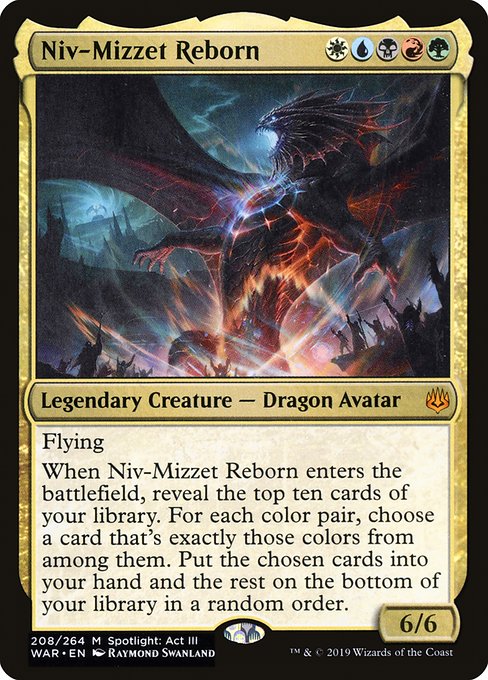















![Commander VS S15E5: Roalesk VS Massacre Girl VS Niv-Mizzet VS Neheb [EDH] thumbnail](https://i.ytimg.com/vi/Xy3w7W-GWgw/sddefault.jpg)








![Secret Lair Shuffle [Commander VS 299] | Magic: the Gathering EDH Commander Gameplay thumbnail](https://i.ytimg.com/vi/8A3esNBvsUg/sddefault.jpg)


![Commander VS S16E7: The Locust God VS Horde of Notions VS Tatyova VS Balan [EDH] thumbnail](https://i.ytimg.com/vi/yqrnU70Qx6I/sddefault.jpg)

![Commander Vs S2E1: Horde vs Cromat vs Atogatog vs Progenitus [MTG: Multiplayer] thumbnail](https://i.ytimg.com/vi/zeQvGYqjMGI/sddefault.jpg)









